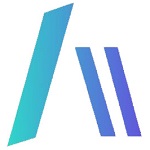 | NavyAI (NAVY)NavyAI is a cutting-edge platform specializing in AI model training and self-learning. It caters to individuals seeking AI models for various purposes, as well as organizations, particularly developers, who benefit from its optimized IDE (Integrated Development Environment) features. Seed Round: NA IMPORTANT: By investing in this business you agree to ourDisclaimer. All information including our rating, is provided merely for informational purposes. CryptoTotem does not provide investment advice. |
Overview
|
What is NavyAI
NavyAI is the first Blockchain Layer for AI model training and self-learning. It’s more cost-efficient and ensures no more AI bias.
We offer virtual access to decentralized artificial intelligence models facilitated through a decentralized network of computing resources. Simply put, we provide our users with a platform where they can create their own AI LLM model by just providing input prompts. We uphold a decentralized culture, so all our LLM models are trained by decentralized GPU resources.
Our vision is to harness the potential of blockchain technology to democratize access to AI, thereby ensuring widespread accessibility and fostering unbiased innovation in the field. With a decentralized contributing mechanism, you can save ten times more money relative to open-source models.
DetailsToken supply: 10,000,000,000 NAVYLegalRegistration year: 2024 | Token infoTicker: NAVYType: Utility-token Token distribution: Mining - 40% Treasury - 13% Public Sale - 20% Seed - 10% Contributor - 10% Liquidity - 7% |
NavyAI Roadmap
- Market Analysis: Study the current market for AI model deployment platforms and decentralized computing networks. Assess competitors, trends, and potential opportunities for NavyAI.
- Technology Assessment: Evaluate technologies like blockchain, distributed computing frameworks, and containerization for building NavyAI's decentralized GPU network and AI deployment platform.
- User Needs Analysis: Understand user requirements through surveys, interviews, and feedback sessions. Determine the key needs and pain points of AI developers, researchers, and organizations.
- Partnership Exploration: Identify potential partners such as hardware manufacturers, cloud providers, and research institutions to collaborate on resources, infrastructure, and technology development.
- Feasibility Analysis: Assess the technical, operational and financial feasibility of NavyAI. Identify risks and challenges, and develop strategies to mitigate them.
- Beta Testing Launch:
- Introduce a beta version of the NavyAI platform to a curated group of users, including LLM Model and Visual Interpretation Tool adopters.
- Solicit feedback on platform usability, performance, and feature functionality to pinpoint areas for refinement.
- User Feedback Integration:
- Analyze feedback from beta testers and prioritize feature enhancements and bug fixes based on user needs and preferences.
- Iterate on the platform design and functionality to enhance user experience and address any identified shortcomings.
- Token Launch:
- Execute the token launch according to the prepared plan, issuing tokens to early contributors and supporters.
- Conduct a seed round for angel investors to secure initial funding for NavyAI's growth and development.
- Launch a Liquidity Bootstrapping Pool (LBP) to ensure fair and decentralized token distribution while providing liquidity for the NavyAI token.
- Performance Optimization:
- Undertake performance tuning and optimization efforts to ensure that NavyAI platform meets the rigorous demands of LLM Model and Visual Interpretation Tool users.
- Optimize algorithms for decentralized GPU resource allocation and AI model training to maximize resource utilization and minimize training time.
- Product Concept:
- Develop a proof of concept on powering NavyAI compute with clusters deployed through io.net
- Investigate the feasibility and potential benefits of integrating io.net clusters into the NavyAI platform for enhanced compute capabilities and scalability.
- Collaborate with the io.net team to explore technical integration requirements, performance benchmarks, and deployment strategies for leveraging io.net clusters within NavyAI's decentralized infrastructure.
- Market Research and Analysis:
- Conduct an in-depth analysis of the current market trends, demands, and competitors in the AI infrastructure and decentralized computing space.
- Identify potential opportunities and challenges for developing and integrating the Super GTX-3080 with io.net
- Technology Assessment and Planning:
- Evaluate the technical requirements and feasibility of developing the Super GTX-3080, considering factors such as performance, scalability, and compatibility with io.net
- Develop a comprehensive plan outlining the development milestones, resource requirements
- Prototyping and Testing:
- Begin the prototyping phase to design and build the Super GTX-3080 hardware, software, and network integration components.
- Conduct rigorous testing and validation to ensure the reliability, efficiency, and compatibility of the Super GTX-3080 with io.net
- Iterative Development and Optimization:
- Iteratively develop and refine the Super GTX-3080 hardware and software components based on feedback from testing and user trials.
- Optimize the performance, scalability, and energy efficiency of the Super GTX-3080 to maximize its utility and cost-effectiveness for users on io.net
- Integration with io.net Network:
- Integrate the Super GTX-3080 with the io.net network infrastructure, enabling seamless access to decentralized GPU resources for AI model training and inference.
- Develop protocols, APIs, and interfaces for users to leverage the Super GTX-3080 within the io.net 's ecosystem
- Documentation and Training:
- Develop comprehensive documentation, tutorials, and training materials to educate users on the capabilities, features, and usage of the Super GTX-3080 and its integration with io.net
- Provide ongoing support and resources to assist users in effectively utilizing the Super GTX-3080 for their AI computing needs.
